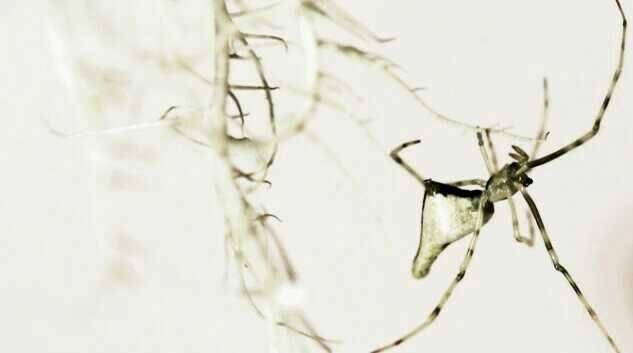Why does evolution sometimes repeat itself? Spider-eating spiders may hold the answer

Coming across some thing for the second time might sound like a letdown. not for ecologists in Hawaii, who've found that spider-ingesting spiders on 4 islands there independently developed the equal colorations: gold, black, and white. This rare instance of parallel evolution, which has also been visible in a further Hawaiian spider, may want to help clarify one among biology’s biggest mysteries: how and whilst evolution repeats itself.
“It’s one of the coolest hidden [examples] of animals evolving new species,” says Robert Fleischer, a conservation genomicist on the Smithsonian Conservation Biology Institute in Washington, D.C., who was not concerned with the paintings.
Hawaii is a tremendous region to look at evolution. Any animal that washes up or flies there can be separated from its relatives through thousands of kilometers, a amazing opportunity for the formation of latest species. And each island in the archipelago is yet any other opportunity to diversify as new arrivals pass into habitats no longer yet taken over by other organisms.
So it's far with a genus of spiders referred to as Ariamnes. The up-to-2-centimeter-length woodland dwellers, that can camouflage themselves to appear like sticks, possibly arrived in Hawaii within the beyond 5 million years. considering the fact that then, they've differentiated into numerous species unfold out over four islands.
To get a better experience of how these species advanced, Rosemary Gillespie, an evolutionary ecologist at the college of California, Berkeley, and her colleagues obtained DNA from individuals of each species. All four islands—Oahu, Kauai, Maui, and the big Island of Hawaii—are domestic to shiny gold and darkish species of the spider, and have an extra stupid white model. Gillespie’s group recognized 4 completely new species, making 15 in all.
good judgment would dictate that the spiders that appearance most alike—i.e., those of the same shade—will be the maximum intently associated. but while Gillespie’s group built a own family tree from the genetic information, the nearest spouse and children have been spiders living at the same island, the group reviews these days in modern Biology. consequently, each island was probably colonized by one spider that then various into the exclusive-coloured species.
The researchers suspect that the primary Ariamnes was dark or gold, and that it landed on one of the oldest islands to shape, possibly Kauai, earlier than spreading by some means to Oahu and subsequently to the younger Maui and the large Island. That first spider likely lived on the webs of different spiders, stealing snagged prey and once in a while chowing down on the web’s owner. as soon as in Hawaii, Ariamnes started out to roam and hunt.
The effects parallel some other have a look at of Hawaii’s “spiny leg” Tetragnatha spiders, additionally by Gillespie. in a single organization of this genus of lengthy-jawed spiders, in which and what they hunt determines their shades: green, maroon, or brown.
but evolution did now not repeat itself in a extraordinary organization of Tetragnatha spiders that still assorted in Hawaii. Now, Gillespie thinks she is aware of why. That different institution of Tetragnatha spiders are traditional, web-constructing spiders that don’t have to discover an area to cover from birds in the course of the day. Webless spiders like Ariamnes and the spiny leg Tetragnatha have to very swiftly increase the protective color that suits in which they conceal out. The white species normally relaxation on light lichens and the gold ones at the undersides of leaves, where their shininess makes them reflect the leaf’s colours. And the dark ones live beneath lifeless ferns or in moss.
“This underscores how a rich surroundings having few other species spurs rapid evolution within the few [organisms] that with the aid of threat managed to get there,” says Dolph Schluter, an evolutionary biologist at the college of British Columbia in Vancouver, Canada, who became now not involved inside the have a look at. in line with Schluter, maximum researchers had concept it become in most cases competition for food that drove species to diversify and adapt. however here, predation appears key, he provides, and might have even been a important step inside the starting place of species which can be closely hunted. Matching the historical past is so critical, that evolution does tend to repeat itself in those conditions.
The outcomes may also even help scientists predict how other organisms might evolve in parallel to steer clear of predators, the researchers say and assist provide an explanation for why evolution repeats itself from time to time but now not different times. however what might be absolutely interesting, says Fleischer, is if Gillespie’s group can pick out the genes and the mutations responsible for the shade changes. “that might be the Holy Grail.”